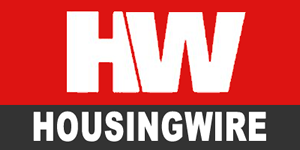How Umpqua Bank enhanced the customer experience using CoreLogic’s Property Tax Estimator
Automation is quickly becoming a key motivator for lenders to modernize their current processes. Whether it’s to improve communication or to streamline back-end operations, lenders have more tools and technology solutions to choose from than ever before to enhance the borrower experience.
In this case study published in HousingWire’s Knowledge Center, Umpqua Bank explained how they selected CoreLogic’s Property Tax Estimator to transform their manual processes and provide a transparent and consistent system that reimagined their relationship with borrowers.
THE PAIN POINTS
Historically, the method to estimate property tax for borrowers has been disjointed and inconsistent. Loan officer calculations can vary widely from person to person, with some seasoned loan officers calculating taxes off 2% of the appraised value while others choose to base their estimate off 1.5% of the purchase price.
There simply is no industry standard on how to estimate the property tax for new construction or a new home, creating a significant amount of discrepancies in the industry.
For Umpqua Bank, an Oregon-based bank that has locations across five states, the outdated process seemed to over- or under-calculate in the industry at least 60% of the time. They’ve witnessed anything from an $8,000 shortage to a $4,000 overage, which is largely due to the manual work involved and how greatly calculations are impacted by each county.
“We want to be able to provide concise and accurate calculations for borrowers across the board regardless of the loan type, purchase price or any other sort of information. We want the same calculation, the same number, and the same process from beginning to end,” said Jacqulyne Trukositz, business application analyst at Umpqua Bank.
TOP REQUIREMENTS IN A SOLUTION
Since the industry has lacked a uniform way to estimate property taxes, Umpqua Bank wanted a solution that would not only alleviate related challenges but help them build strong relationships with borrowers. A comprehensive solution would:
- First and foremost, build a better borrower experience
- Establish consistency for property tax estimations
- Assist after natural disasters
- Benefit origination and servicing
Trukositz explained that as other lenders start to have conversations with their management team about new solutions, many organizations will hyperfocus on the cost of the solution. Cost is important, but there are also other factors that have a substantial impact on costs that aren’t as easy to factor in.
Umpqua Bank looked beyond the main cost and factored in the opportunity they had to build greater trust with borrowers in an area that is infamously known for being difficult in the space.
Learn more about how Umpqua Bank selected CoreLogic’s Property Tax Estimator, how it moved from evaluating to implementing the solution and how they ultimately were able to refine their process to help enhance the borrower experience.
The proven results even led Trukositz to add that “no news is good news,” with the improvements allowing the team to work on other things that keep them growing and require their attention. Read the full case study here.






